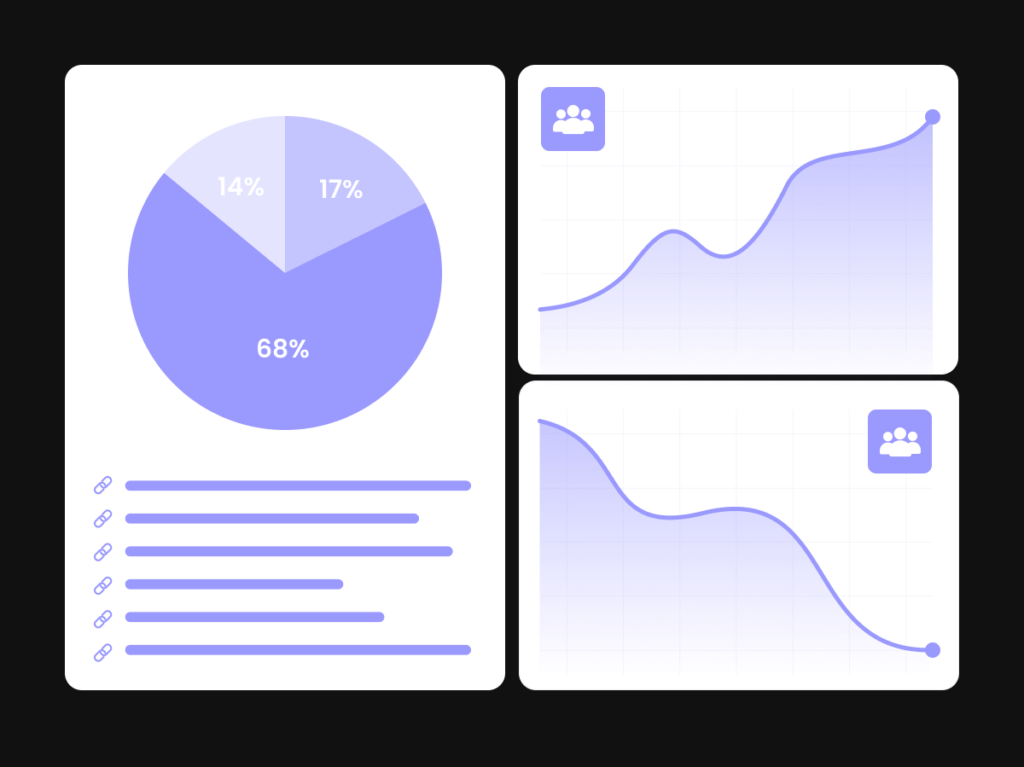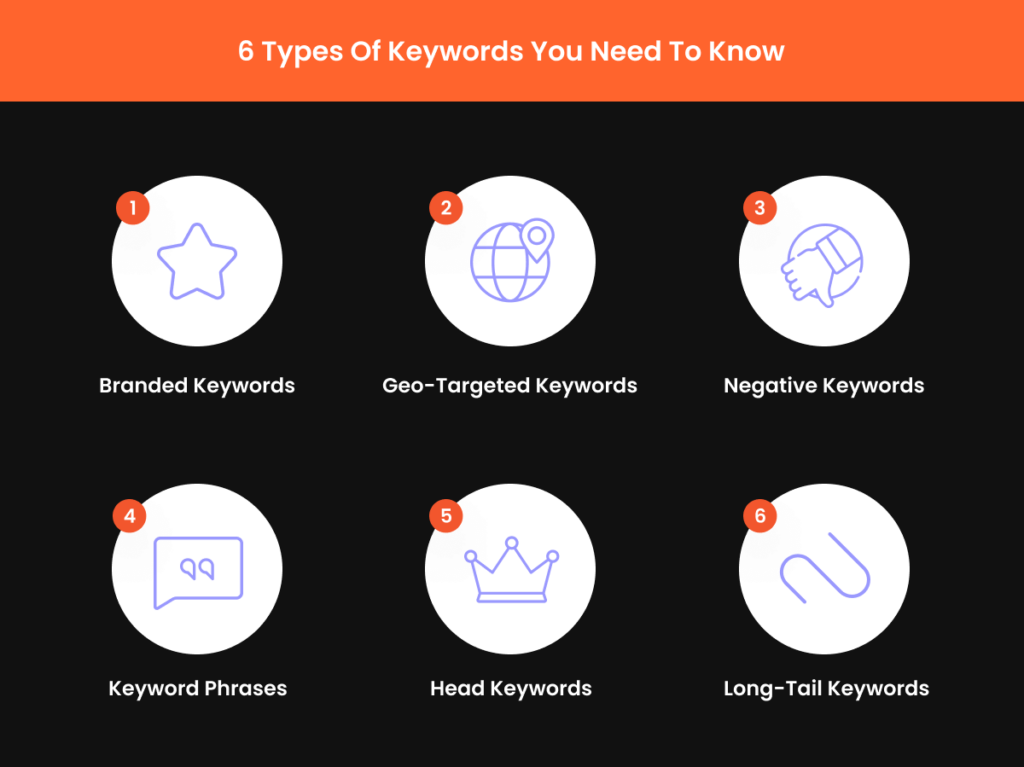What Are Keywords? A Simple SEO Guide To Keywords For Beginners

By Melissa Ng | Last Updated 23 February 2024
Understanding the Basics of Keywords
Decoding SEO: What Are Keywords?
Imagine you’re having a conversation with a search engine, you articulate your thoughts in a string of words — which, in SEO lingo, are your keyphrase targets. You type in what you’re looking for, like “marketing portfolio examples”, and the engine churns out a myriad of websites. The words or phrases you use encapsulate your intent and are known as keyphrases.
In the digital world, keyphrases are the crux of communication between your website and potential visitors. Particularly when you utilise a specific long-tail keyphrase, you cater to a niche audience, such as marketers looking for portfolio inspiration. By integrating these significant terms into your site’s content, and considering search query variations for a broader reach, you increase the chances of the search engine presenting your site as a top response to a user’s quest.
Utilising keyphrase planning is paramount in tailor-fitting your content to cater to your customer persona — leading to effective SEO and enhanced online discovery.

The Role of Keywords in Digital Marketing
Keywords are like signposts in the express lanes of digital marketing, creating pathways that lead consumers straight to your virtual doorstep. They help align your content with what your intended audience is actively seeking, thus playing a crucial role in increasing visibility and driving traffic to your business’s online presence. Adhering to SEO best practices, utilising keywords not only enhances the user experience but also bolsters your SEO results, potentially putting your brand ahead in the competitive digital landscape.
Every time you use a keyword that resonates with your audience, you’re essentially waving a virtual flag, saying “Hey, what you’re looking for is right here!” This is why smart keyword use is vital for any successful digital marketing strategy — it connects your content with the right users, boosts your search rankings, and can ultimately lead to higher conversion rates. By strategically using keywords in line with search engine optimisation techniques, one can expect an increase in traffic that is both targeted and ready to engage with the content you offer.

Types and Importance of Keywords
Unveiling Various Types of Keywords
In the world of SEO, diversity thrives in the form of different keyword types. You have:
- Branded Keywords: These include a brand’s name, signaling a user’s interest in a specific company (like ‘Adobe Photoshop’).
- Geo-targeted Keywords: Location-specific keywords (e.g., ‘dentist in Austin Texas’).
- Negative Keywords: Used in PPC campaigns to exclude irrelevant traffic (for instance, ‘free’ if you’re selling premium products).
- Keyword Phrases: More than a single word, these phrases capture a more detailed intent (‘affordable yoga mats’).
- Head Keywords: Also known as ‘seed’ keywords, they are broad and highly competitive (like ‘coffee’).
- Long-tail Keywords: Usually composed of three or more words, they’re specific and less competitive (‘best organic coffee for espresso machines’). Read more about long-tail keywords in our blog post: Long Tail Keywords: Find and Use Them for Traffic.
Remember, each type serves a particular purpose: from pinpointing a location to filtering unwanted clicks, understanding these will guide your SEO efforts in the right direction.

Why Keywords Are the Cornerstone of SEO
Think of SEO as building a house, and keywords as the foundation. Without a solid foundation, the house – or your SEO strategy – could crumble. Utilising SEO tools and conducting a thorough SEO audit can offer insightful guidance in laying this foundation effectively. Here’s why keywords are so integral:
- Targeting: Keywords, identified through precise keyword research results, ensure that your content reaches the appropriate audience. Without them, you might as well be shooting arrows in the dark.
- Search Rankings: The right keywords can catapult your website to the top of search engine results, increasing visibility. Keyword optimisation is critical here, as it elevates your web presence to potential customers.
- User Intent: They reflect what users are seeking, allowing you to tailor content that meets their needs, increasing the chances of engagement.
- Content Relevance: Keywords help search engines understand the context of your content, thus ranking it for the right queries, which is pivotal in enhancing user experience.
- Competitive Edges: By targeting the right keywords, you can outshine competitors and capture more market share, often leading to increased revenue.
In essence, keywords lay the groundwork for all subsequent SEO efforts and create a focused roadmap for driving quality traffic to your web properties. When used strategically, they serve as the blueprint for constructing a resilient and high-ranking SEO edifice.

How to Identify Effective Keywords
Crafting a Keyword Strategy for Beginners
If you’re dipping your toes into the SEO waters, creating a solid keyword strategy is your first swim lesson. Begin by setting clear goals — decide what you want to achieve, whether it’s increased traffic, better leads, or enhanced brand visibility. Utilising a keyword explorer tool can drastically simplify this process by providing insights into keyword monthly search volume and competition.
Follow these simple SEO tips to get started:
- Understand Your Audience: Identify the language and search habits of your potential visitors. This step is crucial for determining the relevant keywords that will draw your audience in.
- Conduct Basic Research: Use tools like Google Keyword Planner or a sophisticated keyword explorer tool to find keyword ideas and search volume data, which will help you gauge the potential traffic for your keywords.
- Evaluate Relevance: Choose keywords that closely align with your content’s message and intent. This ensures that your content resonates with the audience and search engines alike.
- Assess Competition: Look at the difficulty score and who currently ranks for your desired keywords. Evaluating this can provide a strategic view of where you may achieve the best results.
- Create a Mix: Balance broad, competitive terms with more specific, niche phrases (long-tail keywords). A well-executed keyword map will support this effort, helping you to visualise and track the alignments.
Steady effort and routine refinement of your keyword strategy, with attention to metrics like keyword monthly search volume, will pave your way to becoming an SEO maestro.

Tools and Techniques for Finding the Right Keywords
Your journey to uncover the right keywords doesn’t have to be a solo adventure. Utilise a blend of tools and techniques to discover the treasure trove of terms that will lead prospects to you. An effective SEO software can drastically streamline this process, offering insights and automation that free up time for other SEO tasks.
Start with Google Keyword Planner for its direct-from-the-source data. It’s a favourite first-stop for many as it provides insights into search volumes and competition levels for keywords. For a broader perspective, leverage tools like Semrush’s Keyword Magic Tool. It offers a wide array of keyword variations and analytic data that can sharpen your strategy, especially when you’re tracking search volume metrics.
Here’s a quick guide:
- Use Seed Keywords: Start with broad terms related to your business to generate more specific phrases. Utilise SEO software to assess the efficacy of these keywords in real-time.
- Explore Questions: Tools often have a ‘Questions’ tab for finding long-tail, question-based keywords. These keyword searches can uncover specific user intent that’s valuable for targeting.
- Check Competitiveness: Target keywords with low to moderate competition for a better shot at ranking. High competition keywords can be more challenging but offer great rewards if conquered.
- Monitor Volume: Consider the search volume metric but don’t overlook lower volume niche terms that may attract quality traffic. These terms may have lower search volume but can be highly targeted.
- Refine Continuously: Your keyword list is not set in stone. Revisit and adjust it as trends, and search behaviours evolve, and new data from keyword searches becomes available.
By methodically researching and selecting your keywords, you’re creating an SEO compass to navigate the vast digital landscape.
For more information, check out our blog post: The 10 best SEO tools and hacks.

Best Practices for Using Keywords
Integrating Keywords into Your Content
Cleverly weaving keywords into your web content isn’t just an art; it’s a science that can greatly benefit your SEO. But remember, it’s not just about quantity; placement matters too. One crucial feature is the SEO title, which acts as the face of your webpage and should encapsulate your primary keyword. Here’s how you can integrate keywords naturally:
- Page Titles: Your primary keyword should feature prominently here, as part of your title tag strategy.
- Headings and Subheadings: Incorporate secondary keywords to structure your website content effectively.
- First Paragraph: Drop your main keyword early on to establish topic relevance in the eyes of search engines.
- Body Text: Use variations and long-tail keywords throughout without overstuffing, as it leads to a more natural flow.
- Meta Descriptions: Craft compelling descriptions with your primary keyword to improve click-through rates, keeping user engagement in mind. Check out our blog post for some great examples: The Ultimate Guide to Meta Description Examples for Search Engine Optimisation.
- URLs: When possible, include a keyword to give users and search engines a clear indication of the page content, reinforcing the overall theme of your webpage.
Remember, the key is subtlety. Keywords should fit seamlessly into your content so that they enhance the reader’s experience rather than detract from it. Making sure your primary keywords are present in the title tags, on-page content, and meta descriptions, where appropriate, can help you rise in the search engine result pages (SERP).

Avoiding Common Keyword Pitfalls
Navigating the keyword landscape can sometimes lead to missteps. Here are a few pitfalls to watch out for:
- Keyword Stuffing: Overloading your content with keywords can lead to penalties from search engines. Instead, strive for a natural flow. Read more about keyword stuffing in our article: What is Keyword Stuffing? Definition, How to Avoid and Why It’s Bad for SEO
- Ignoring Search Intent: Missing the mark on why users search for certain terms can make your content irrelevant. Align your content with the user’s needs and questions.
- Forgetting about Long-Tail Keywords: Don’t overlook these gems. Though they may bring in less traffic, it’s often more targeted and high-converting.
- Neglecting Local SEO: If you have a local business component, geo-targeted keywords are your best friends. Make them a part of your strategy. Read more in our blog post: What is Local SEO and How Does it Work? A Comprehensive Guide to Local Search in 2024.
- Stagnant Keyword Lists: The digital landscape is always changing. Regularly update and expand your keyword list to stay relevant.
By steering clear of these common errors, you’ll set yourself up for more effective and sustainable SEO wins.

Measuring Keyword Success in SEO
Tracking the Performance of Your Keywords
Once your keywords are planted across your site like digital seeds, it’s time to nurture them and watch them grow. Tracking their performance is crucial — as it tells you which seeds are blossoming and which might need a little more care. Harnessing the right SEO tools can significantly enhance your ability to monitor and increase website traffic stemming from your strategic use of keywords.
Make friends with tools like Semrush’s Position Tracking to observe your website’s rankings over your chosen keyword phrases. It’s like a fitness tracker for SEO, showing you the health and history of your page rankings. Google Analytics and Google Search Console are also key players, providing insights into traffic and engagement related to your keyword-rich content.
A few tips to keep in mind:
- Consistency is Key: Regular checks (monthly is recommended) can help you spot trends or issues early on and are crucial in maintaining healthy website traffic.
- Data Speaks Volumes: Look at traffic, engagement, and conversion metrics to gauge success, not just ranking positions, which can directly impact your site’s visibility.
- Be Ready to Pivot: Adapt your strategy if certain keywords aren’t performing as well as hoped — effective use of SEO tools can guide you in making informed decisions.
Remember, SEO is a marathon, not a sprint. Keeping an eye on your keyword performance ensures you’re on the right track and steadily increasing the flow of traffic to your website.

Adapting Your Strategy Based on Keyword Analytics
After diving into the deep end of keyword analytics, it’s crucial to not just tread water but also swim ahead with a more refined strategy. This means leveraging the data you’ve gathered to make informed adjustments to your keyword approach, keeping in mind the nuances of the search algorithm. Start by evaluating which keywords are driving traffic and conversions, and which are lagging behind. It might be tempting to cling to those underperformers, but sometimes it’s better to let them go in favour of more fruitful terms, particularly in light of the advancements in the Google search algorithm.
Consider these action points:
- Double Down on Winners: Allocate more resources to content and strategies involving high-performing keywords.
- Fill in the Gaps: Identify and target keywords that are relevant but might be missing from your current strategy.
- Stay Relevant: Update content with fresh keywords that reflect evolving search trends or changes in your industry, like the updated search volume algorithm for even more accurate analysis.
- Improve Quality: Enhance pages that rank lower than expected with better content, more effective keyword integration, or improved user experience.
Remember, the goal isn’t to change course with every new data point, but rather to evolve your strategy to stay competitive and relevant in a landscape where search algorithms continuously evolve.

FAQs about Keywords for Novices
What Makes a Good Keyword for SEO?
A good keyword for SEO is a blend of relevancy, search volume, and attainable competition. When considering a search query, it’s crucial to ensure that the chosen keyword example accurately reflects the content on your page and aligns with what your target audience is actively seeking. For instance, while “what are nfts” might be a trending topic, you’d want to measure its popularity against other variations to capture a wider audience. Balance is key — aim for terms that are popular enough to drive traffic but specific enough to attract qualified visitors, ensuring your visibility in the vast sea of search results.
How Many Keywords Should I Target in My Content?
Ideally, focus on one primary keyword per page to ensure content clarity and avoid diluting your message. Complement them with five to seven secondary keywords that support the main terms and the context. However, the quality and natural integration of these keywords are of utmost importance — never compromise content readability for keyword density.
Disclaimer
Some of the links in this post are affiliate links. This means if you click on the link and purchase the service, we may receive an affiliate commission at no extra cost to you. Rest assured, we only recommend products we believe will add value to our readers.
Submit An App
Seen a cool app you think we should review? Submit your recommendation using our form.


